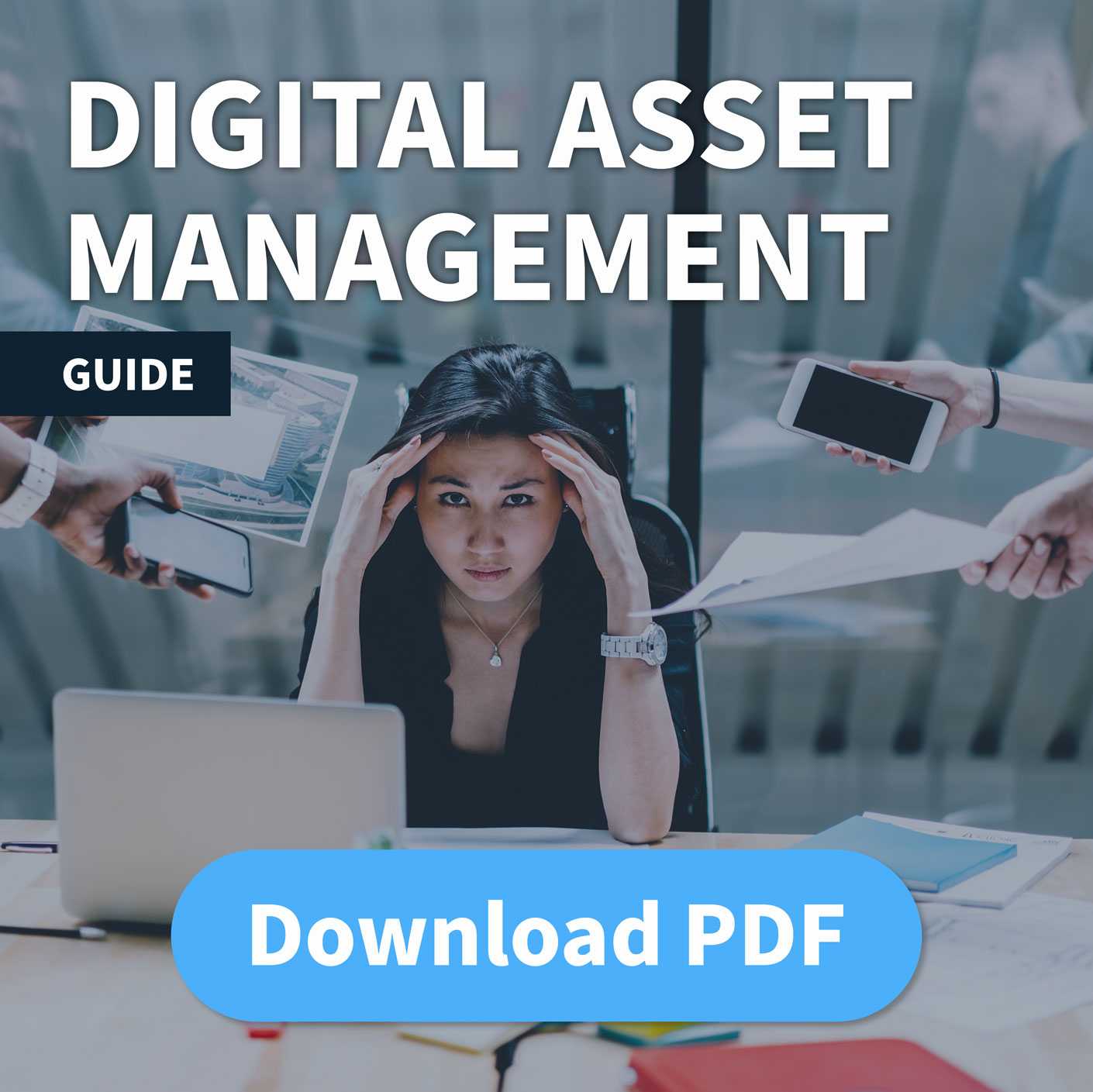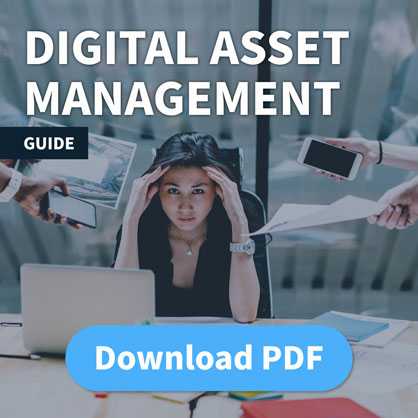AI in Digital Asset Management: Threat or Opportunity? The Dark Side of Automation
In recent years, artificial intelligence (AI) has fundamentally changed our lives. Although there are many areas where AI has positive impacts, there are also those perceived as a threat. One of the industries that must deal with the effects of AI is Digital Asset Management.
This free guide provides you with the knowledge and tools to securely and effectively manage your digital assets, thus enhancing the efficiency and productivity of your business.
Digital Asset Management & AI
Digital Asset Management refers to the process of managing a company’s digital resources, including images, videos, and audio recordings. Managing these resources can be very time-consuming and complex, especially considering that companies often have thousands of digital assets. AI provides a solution to this problem as it is capable of processing large amounts of data quickly and efficiently. The use of AI algorithms in Digital Asset Management presents both opportunities and risks. Although automation offers benefits such as time and cost savings, as well as improved quality and utilization of digital assets, the dark side of automation cannot be ignored.
Dark Side of Automation
One of the biggest drawbacks of automation in Digital Asset Management is the risk of data misuse. Inappropriate data fed into AI algorithms can have serious consequences for privacy and data protection. Additionally, AI technology can lead to unforeseen errors and problems, resulting in errors in digital asset management.
Another risk of automation is job displacement. When AI algorithms perform tasks that were previously done by humans, it can lead to job losses. It can also result in a lack of human expertise essential for monitoring and correcting errors.
Opportunities of Automation
In addition to the drawbacks, automation also offers many benefits to companies. An important advantage is time and cost savings. By using AI algorithms, companies can manage and edit digital assets faster and more efficiently, saving time and costs.
Another benefit of AI in Digital Asset Management is the improvement of digital asset quality. Through the use of AI algorithms, color corrections and other image editing can be performed to enhance the quality of images and videos. Moreover, AI algorithms can ensure that digital assets are correctly tagged and organized, making them easier to find and use later.
Moreover, companies can use their digital assets more effectively, leading to improved marketing and sales efforts. Improved utilization of digital assets can result in higher revenue and profitability. Companies can also find new and innovative ways to use their digital assets, setting themselves apart from their competition.
Human Expertise
It is important to emphasize that AI in Digital Asset Management does not necessarily lead to job losses. Although AI algorithms can perform certain tasks faster and more efficiently than humans, there are still many areas where human expertise is needed. This human expertise is also essential for identifying and correcting errors in digital asset management.
Conclusion
In conclusion, AI in Digital Asset Management offers both threats and opportunities. It is essential for companies to keep the dark side of automation in mind and ensure that the automation of digital assets is carefully considered and implemented to achieve maximum benefits. Companies should ensure that their AI algorithms are appropriately trained and monitored to ensure the accuracy and security of digital asset management. It is also important for companies to integrate human expertise into their digital asset management strategies to ensure that they are able to identify and correct errors.
Overall, the integration of AI into Digital Asset Management offers many benefits and allows companies to manage and utilize their digital assets more effectively. However, if companies fail to consider the dark side of automation and do not adequately monitor their AI algorithms, they can lose the benefits of automation and face serious consequences.
Schöpfen Sie das volle Potenzial Ihrer digitalen Assets aus
Sind Sie es leid, stundenlang nach Dateien zu suchen, den Überblick über Ihre digitalen Bestände zu behalten und mit ineffizienten Arbeitsabläufen zu kämpfen? Lassen Sie uns helfen! Unser Team ist auf die Verwaltung digitaler Bestände spezialisiert und kann Ihnen zeigen, wie Sie den Arbeitsablauf in Ihrem Unternehmen optimieren können, um Zeit, Geld und Ärger zu sparen. Warten Sie nicht länger, kontaktieren Sie uns noch heute und lassen Sie uns loslegen!
Discovering the optimal solution for your business is our aim.
AdmiralCloud can simplify and streamline the handling and distribution of digital media, resulting in important resource savings.





